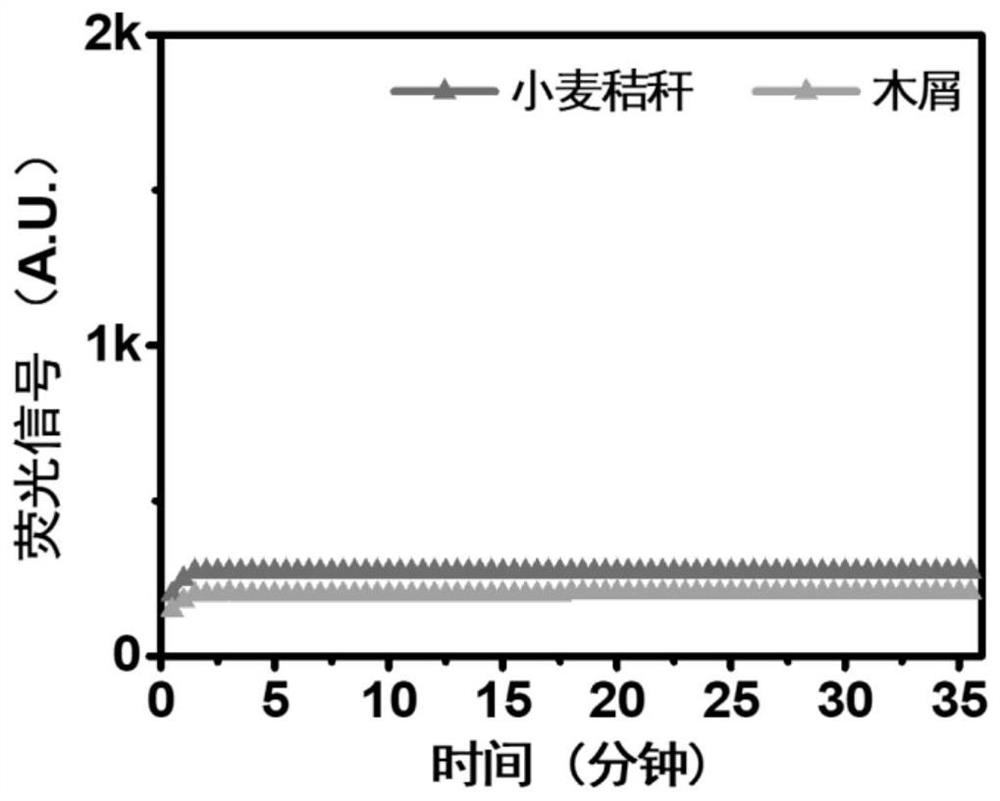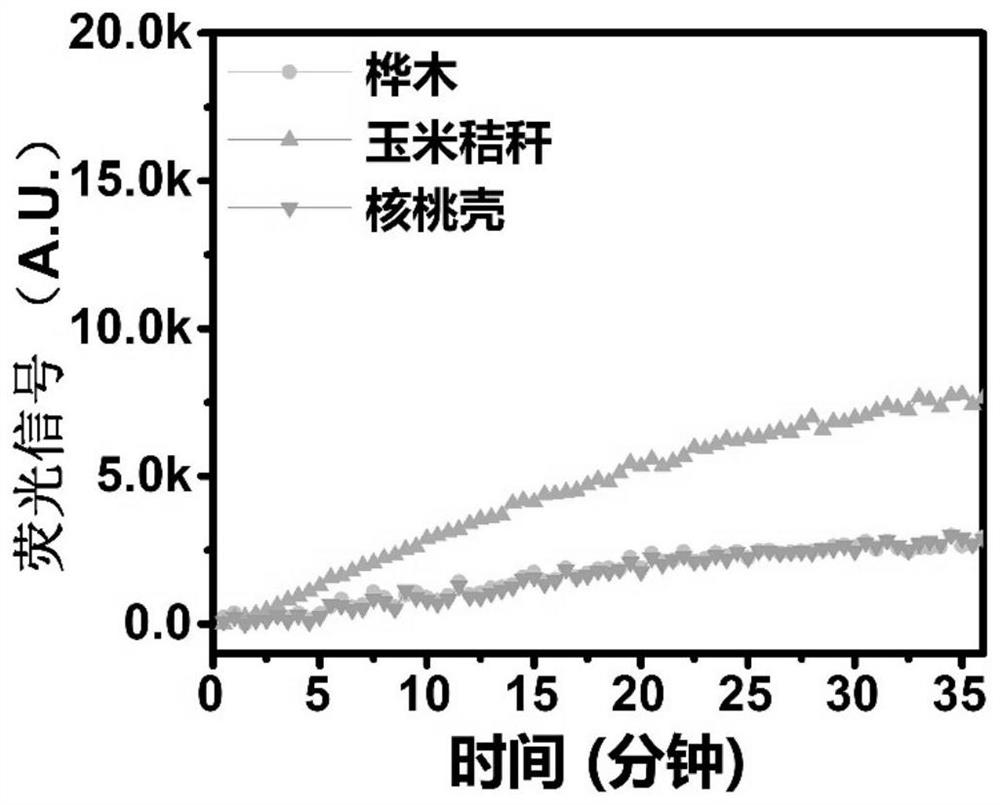Novel coronavirus disinfectant derived from biomass active ingredients and preparation method thereof
A coronavirus and disinfectant technology, applied in the field of disinfectants to inactivate the new coronavirus COVID-19, can solve the problems of high safety requirements for use and storage, irritation and corrosiveness, animal and plant health risks, etc. Eco-environmental benefits, low cost, and significant killing effect
- Summary
- Abstract
- Description
- Claims
- Application Information
AI Technical Summary
Problems solved by technology
Method used
Image
Examples
Embodiment 1
[0020] Sawdust and water were mixed in the reactor according to a certain solid-to-liquid ratio (1:13), sealed and placed on the heater, and the temperature was raised to 330 °C at a rate of 5 °C / min and maintained for 1 hour. After the reaction was completed, Cool to room temperature. The obtained solid-liquid mixture is separated, and filtered through a 0.45 μm filter membrane to obtain a plant component extract, that is, a disinfectant. After diluting the disinfectant to different multiples, add it to the Sars-Cov-2 genetic material nucleic acid synthesized by the HiScribe T7 kit, react at room temperature for 30 minutes, and use the new coronavirus nucleic acid extraction-free on-site rapid detection system to measure the nucleic acid reaction. Investigate the effect of disinfectants on novel coronavirus. The results showed that the disinfectant extracted from sawdust was negative for the nucleic acid of the new coronavirus, indicating that the disinfectant had a signific...
Embodiment 2
[0022] Wheat straw and water were mixed in the reactor according to a certain solid-to-liquid ratio (1:13), sealed and placed on the heater, and the temperature was raised to 330 °C at a rate of 5 °C / min, and maintained for 1 hour, until the end of the reaction After cooling to room temperature. The obtained solid-liquid mixture is separated, and filtered through a 0.45 μm filter membrane to obtain a plant component extract, that is, a disinfectant. After diluting the disinfectant to different multiples, add it to the Sars-Cov-2 genetic material nucleic acid synthesized by the HiScribe T7 kit, incubate at room temperature for 30 minutes, and use the new coronavirus nucleic acid extraction-free on-site rapid detection system to measure the nucleic acid reaction. Investigate the effect of disinfectants on novel coronavirus. The results showed that the disinfectant extracted from wheat straw was negative for the nucleic acid reaction of the new coronavirus, indicating that the d...
Embodiment 3
[0024] Sawdust and water were mixed in the reactor according to a certain solid-to-liquid ratio (1:13), sealed and placed on the heater, and the temperature was raised to 330 °C at a rate of 5 °C / min and maintained for 1 hour. After the reaction was completed, Cool to room temperature. The obtained solid-liquid mixture is separated, and filtered through a 0.45 μm filter membrane to obtain a plant component extract, that is, a disinfectant. Add the biological disinfectant to the recombinant spike protein of SARS-COV-2 virus, incubate at room temperature for 30 minutes, use fluorescent lateral flow test paper and supporting equipment to detect protein activity, and investigate the killing effect of the disinfectant on the new coronavirus . The results show( figure 2 ), the degradation rate of the virus protein reached 85%.
PUM
 Login to View More
Login to View More Abstract
Description
Claims
Application Information
 Login to View More
Login to View More - R&D
- Intellectual Property
- Life Sciences
- Materials
- Tech Scout
- Unparalleled Data Quality
- Higher Quality Content
- 60% Fewer Hallucinations
Browse by: Latest US Patents, China's latest patents, Technical Efficacy Thesaurus, Application Domain, Technology Topic, Popular Technical Reports.
© 2025 PatSnap. All rights reserved.Legal|Privacy policy|Modern Slavery Act Transparency Statement|Sitemap|About US| Contact US: help@patsnap.com



